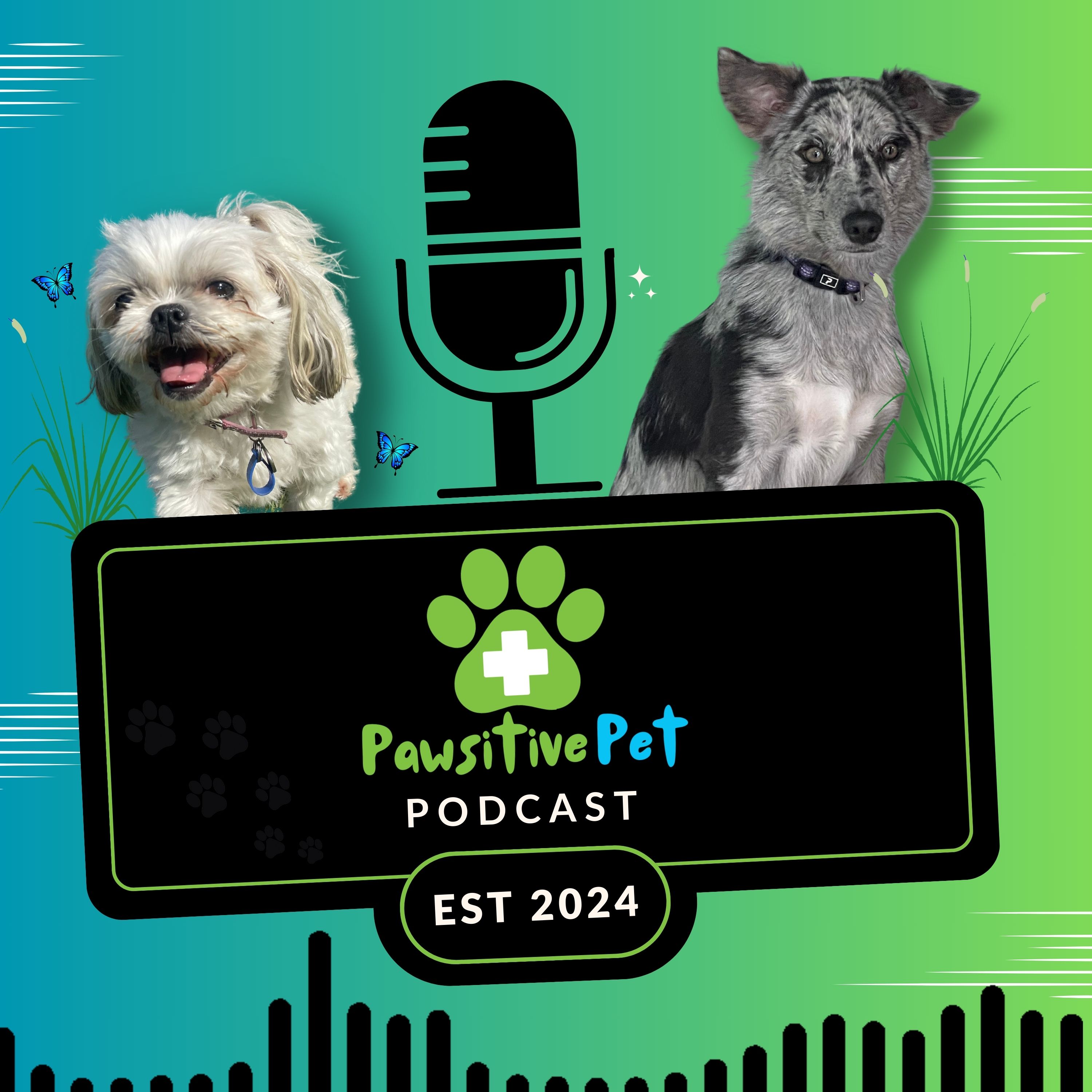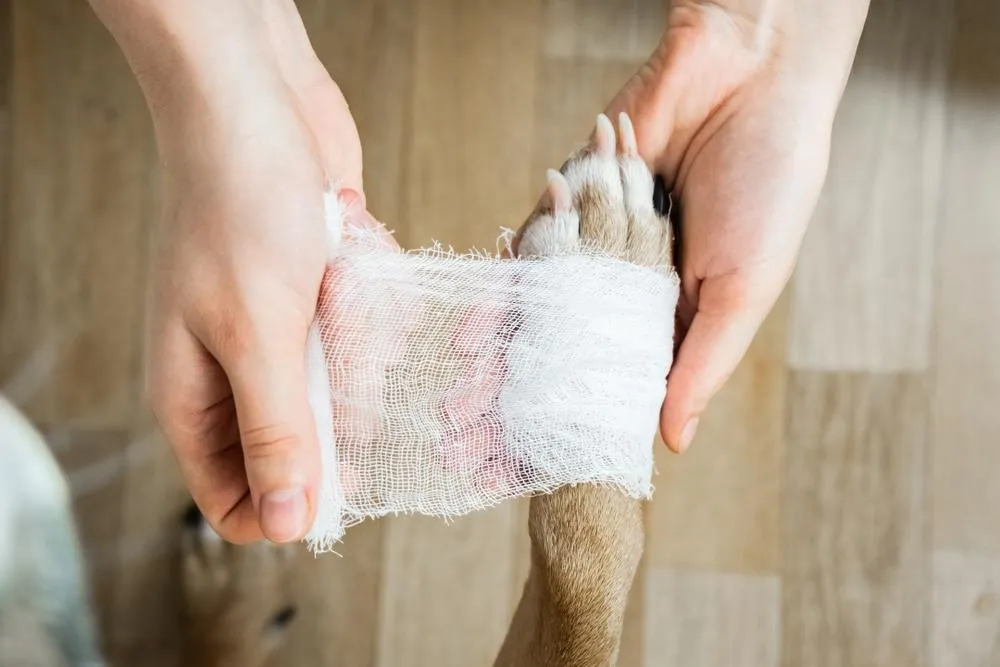PAWSITIVE PET PODCAST
Pawsitive Pet Adventures: Lessons from Pet Heroes

Past Blogs

Bandage and Buddy Care: Basic Wound Management for Dogs
"Understand the importance of cleaning the wound with appropriate solutions to prevent infection."- Aaron
Introduction:
Welcome to "Bandage and Buddy Care," a vital guide focusing on the basics of wound management for dogs. Whether it’s a minor cut or a more serious injury, knowing how to properly care for your dog's wounds is essential for every pet owner. This module is designed to guide you through the crucial steps of canine wound care, ensuring that you’re prepared to provide effective first aid when your furry friend needs it most. Being informed and prepared can help prevent infections, minimise pain, and support faster recovery.
1. Assessing the Wound
Identify the Type of Wound:
Dogs can sustain various types of wounds such as:
Cuts and Abrasions: Often caused by sharp objects or rough surfaces.
Punctures: Caused by bites, sticks, or nails, and can be deep with a small entry point.
Lacerations: Deep cuts that can tear through multiple layers of skin and tissue.
Burns: Resulting from heat, chemicals, or friction.
Each wound type requires a different approach to care. For instance, puncture wounds, although they may seem minor on the surface, can introduce bacteria deep into tissues and require thorough cleaning and possibly antibiotics.
Evaluating Severity:
Assessing the severity of the wound is crucial. Look for:
Depth and Size: Large, deep wounds may need stitches.
Location: Wounds near joints, eyes, or genitals require immediate veterinary attention.
Bleeding: Continuous bleeding, especially bright red arterial bleeding, is an emergency.
Signs of Shock: Pale gums, rapid pulse, or lethargy indicate shock, necessitating urgent veterinary care.
2. Initial Steps and Cleaning
Safety First:
Dogs in pain may react defensively. Gently restrain your dog to prevent bites. Use a soft muzzle or wrap a leash around their snout if necessary. Approach calmly and reassure your pet with a soothing voice.
Wound Cleaning:
Proper cleaning is critical to prevent infection:
Flush the Wound: Use sterile saline or clean water to flush out debris and dirt. Avoid using hydrogen peroxide or alcohol, which can damage tissues and delay healing.
Apply an Antiseptic: A mild antiseptic solution like diluted betadine or chlorhexidine can help reduce bacterial load. Always consult with your veterinarian for the best antiseptic choice.
3. Applying a Bandage
Types of Bandages:
Different wounds and locations require different bandages:
Gauze Pads and Rolls: For general wounds; allows the wound to breathe while absorbing discharge.
Non-stick Pads: Ideal for wounds that should not have the dressing adhere to them, preventing further injury when changing bandages.
Adhesive Bandages or Wraps: For securing bandages in place without being too tight, which could impede circulation.
Bandaging Techniques:
Proper bandaging is essential to protect the wound without causing additional problems:
Step 1: Place a sterile non-stick pad directly over the wound.
Step 2: Wrap the gauze roll snugly around the wound and pad, but not so tight that it restricts circulation. You should be able to slide two fingers under the bandage.
Step 3: Secure with adhesive tape or self-adhesive bandage wrap. Ensure there are no wrinkles in the bandage, as this can lead to pressure sores.
4. Monitoring and Aftercare
Watch for Complications:
Aftercare is as crucial as initial wound management. Watch for signs of infection or complications, such as:
Redness or Swelling: Could indicate an infection.
Discharge or Foul Odour: Yellow or green discharge is a sign of infection.
Pain or Lethargy: Increased sensitivity or reluctance to move might suggest an underlying issue.
Changing Bandages:
Regularly changing bandages keeps the wound clean and promotes healing:
Frequency: Change the bandage daily or whenever it becomes wet or dirty.
Gentle Removal: Use saline to loosen the bandage if it sticks to the wound. Carefully reapply a new bandage following the same steps as before.
5. Preventing Wound Licking
Use of E-Collars or Protective Clothing:
Dogs naturally lick their wounds, which can introduce bacteria and delay healing:
Elizabethan Collars (E-collars): These collars prevent the dog from reaching wounds on most parts of their body.
Inflatable Collars or Soft Recovery Collars: More comfortable alternatives that can also prevent licking.
Protective Clothing: Dog-specific shirts or leg wraps can cover the wound area without restricting movement.
6. Recognising When to Seek Veterinary Help
Critical Signs:
While many minor wounds can be managed at home, certain signs require immediate professional care:
Severe Bleeding: If bleeding doesn’t stop within 10 minutes of pressure or if blood spurts from the wound.
Deep or Gaping Wounds: Wounds that are deep or won’t close with pressure need stitching.
Signs of Infection: Persistent swelling, redness, pus, or a foul smell from the wound.
Other Concerns: If the dog shows signs of pain, shock, or if the wound is near vital organs or sensitive areas like the eyes, always consult a veterinarian.
Conclusion
"Bandage and Buddy Care" is an essential part of your toolkit as a responsible dog owner. Being prepared and knowledgeable about wound management can make a significant difference in your dog’s recovery and comfort. Remember, proper wound care is a crucial step towards a speedy recovery for your dog. Always consult a veterinarian if you are unsure of the wound’s severity or your dog’s overall condition.
For a more detailed and practical understanding of canine wound management, consider looking into more comprehensive resources or professional training. Being well-prepared ensures that you can provide the best possible care for your furry friend when they need it most.
By Aaron Nauta
Director, First Aid Trainer and Pet Advocate at Pawsitive Pet First Aid Training
Copyright Seos 2019 -- All Rights Reserved
We’re on a mission to build a better future where technology creates good jobs for everyone.
Call 03 8364 8984
Email: Hello@pawsitivepet.com.au
Site: www.pawsitivepet.com.au


Facebook
Instagram
LinkedIn
Youtube